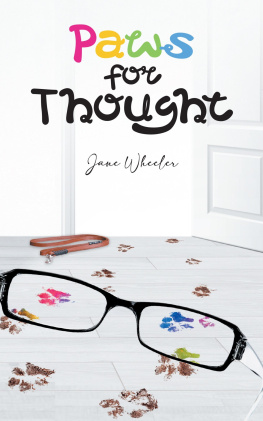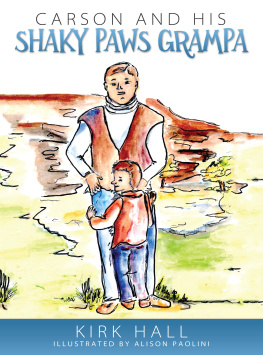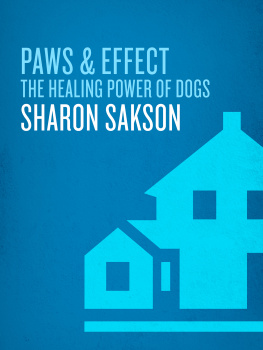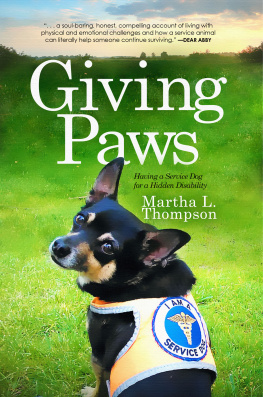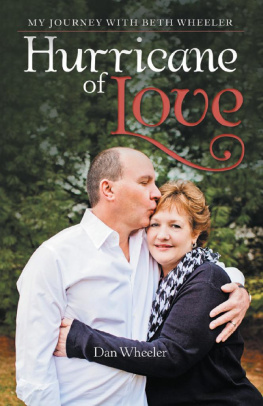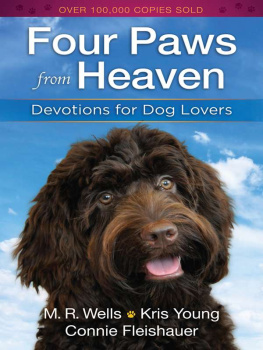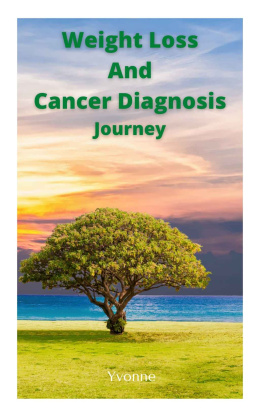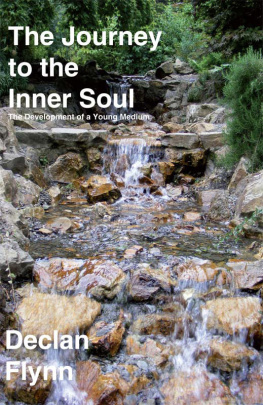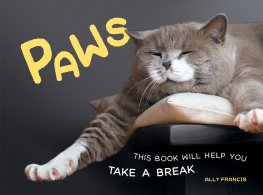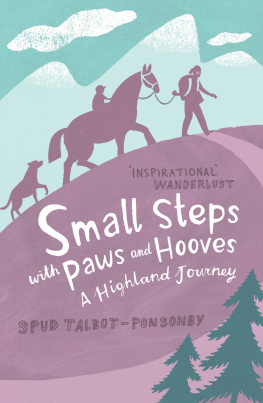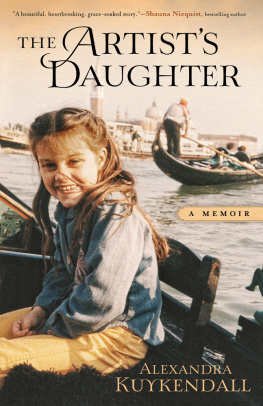

ISBN 978-1-955156-14-1 (paperback)
ISBN 978-1-955156-15-8 (hardcover)
ISBN 978-1-955156-16-5 (digital)
Copyright 2021 by Jane Wheeler
All rights reserved. No part of this publication may be reproduced, distributed, or transmitted in any form or by any means, including photocopying, recording, or other electronic or mechanical methods without the prior written permission of the publisher. For permission requests, solicit the publisher via the address below.
Rushmore Press LLC
1 800 460 9188
www.rushmorepress.com
Printed in the United States of America
To Sam and Carolyn

This is a book about a dog, on the one hand, and about me and my life on the other, but mostly about the lessons I have learned over the years Ive spent with my dog, and without her.
In her own unassuming way, Zoey has been a guide dog not in the usual ways that spring to mind, wherein we envision a placid and meticulously mannered seeing-eye dog escorting a blind person across a busy intersection, or a Lassie, fully attuned to the needs of her masters, fetching help from a neighboring farm when her family is in trouble but in a subtler, and probably more common, way that dogs have of nudging us to our inner guidance.
We all have a guidance system, either buried deep within us or clearly visible, that steers us along the sometimes straight, sometimes zigzag, course of our personal journeys. Some of us go to church regularly, follow religious practices, or take care to adhere to certain ethical principles. This is one version of guidance, an external form that brings considerable security. Many of us, however, navigate through our lives without the clarity that such constructs provide. We may have strong values and beliefs, but our guiding sonars refuse to send us a straightforward roadmap. We flip flop, we waffle, we scan the horizon for landmarks, and scope our surroundings for guideposts.
Enter, the dog. Studies have shown that dogs are good for our physical health: owning a dog is associated with lower blood pressure, lower triglyceride and cholesterol levels, better mental health, and even specific benefits like improved rates of survival following cardiac arrest. Dog therapy has been studied for its value in care of the elderly, and enlightened nursing homes now include this health care modality in the spectrum of services they offer. At the other end of the lifespan, dogs are again called into service; in hospitals and other clinical settings, childrens wards use dog therapy to brighten spirits and quicken recovery. Our society acknowledges for the very young and the very old the natural guidance of dogs, their beneficial impact on mental and physical health.
Scientific research has yet to prove that dogs have an equally, and possibly more, profound impact on our spiritual health. They model for us some of the most important characteristics that we aspire to, though we express them as human, rather than canine, beings. Unconditional love, trust, support, steadfastness, loyalty, even joie de vivre these come effortlessly to our furry companions.
By contrast, it takes some of us years to learn these fundamental life lessons, and to embody, however imperfectly, the characteristics and the simple way of being that radiate so naturally in and through a dog. I, for one, have decades of effort behind me. My dog, in her short nine years, has not only outpaced me but she has illuminated where my next steps lie. In the pages ahead, I hope to record some of the wisdom she has imparted.
I once had a dog, Zoey. Actually, shes relaxing not far from me now, curled up in a patch of sunshine on our light tan, wall-to-wall carpeting, worn and faded by over a decade under the feet of young children, a constant parade of their friends, neighbor dogs and their respective owners. For the past hour, she had been nestled in her oval doggie bed, her paws tucked under her muzzle and tail neatly wrapped under her belly, a picture of contentment. And then, a few moments ago, she relocated to this spot near me, to bask in the suns warmth on this chilly January morning. Her presence is so tangible: her fur that stays sleek, mostly a bright white, despite the fact that her last bath was months ago, whimsically splotched with a few black patches; her body, devoid of all exertion; her rib cage, well articulated on her slim frame, which gently rises and falls in step with her breathing; her shiny wet black nose, adding an inescapable cuteness. She sighs in pleasure as she settles onto the floor, stretched out to absorb as many rays of thin winter sunshine as possible.
Why, then, do I say once? The nearness of death has a way of bringing a whole life, in its fullness, into panoramic view. Its sheer imminence leads us, whether in a state of sad reflection or active rejection, to connect the dots from past to future. As I gaze at nine-year-old Zoey today, I am joined by Zoey the eight-week-old puppy, adorable, a tiny package of playful, romping, baby animal nature; by Zoey as a young dog, patiently enduring the roughness of toddlers, saving her own play for a select few of her dog friends; by Zoey as a mature adult, accompanying me on my infinite missions on foot and in car. Even the grimness of her prognosis cant prevent inner smiles from bubbling up from the depths of my heart, as I remember Zoey in her many stages. The various manifestations of her being overlap like a collage of images, like phases of the moon, like a kaleidoscope, but reality, like a wave on the sand, sweeps the images away just as I appreciate, and want to hold onto, their beauty.
As a primary companion in the high noon of my life, Zoey has risen to meet the challenges of my emotional needs through thick and thin, with resolute patience, gracefully performing this service in the guise of me taking care of her . Dogs, it seems, permit their humans this absurd notion, this inversion of roles, and they do so with wordless humility.
The Dog Walk is a prime example. In this ritual well-known to nearly every dog owner, we believe ourselves to be responsible for our dogs. We arrange our lives around this simple mundane event, embed it into our daily schedules, mark out the passing of time not with coffee spoons, as T.S. Elliott would have it, but with dog walks. Dogs provide us with this organizing principle without discrimination or judgment they never ask if we are good at walking they simply present us with a basic factual need. (It is, after all, the dog who needs to go out, whose business must be accomplished.) Who benefits most from the arrangement is far from clear. We humans believe we know; it is we , after all, who walk the dog, and not the other way around. I, for one, took this duty thoroughly to heart. Rain or shine, in the scorching heat of summer in the South, or in the raw pre-dawn darkness and chill of mid-winter mornings, Zoey would allow me, presumably, to walk her.
The details of life, for each of us, move in to embellish common patterns, patterns which we share with humanity (or with a subset of the human family) and which are at first, by their very nature, simple. The details, then, add color, depth, and texture to the pattern, differentiating us and our lives from those of our friends, family members, neighbors, and others known and unknown. The Dog Walk is no exception.
While my two children were in elementary school, Zoey and our neighbor dog, Polo, accompanied me, day in and day out, on a critical voyage the fetching of the kids. We walked through our middle-class, small-town, neighborhood, up a gradual but steady hill, across lazy intersections breaking the sidewalk every six or seven houses, along a small footpath connecting road and playground. Our pace was determined, in large extent, by the urgent need (mine) to reach the schoolyard by 2:25 p.m. when, on the dot, a classic school bell released five hundred exuberant children. Our neighborhood contributed six or eight kids to the school population every year, and it was these who scanned the large paved area for a small white-and-black dog and a large mottled brown-and-black one. And me, admittedly of lesser importance.
Next page
